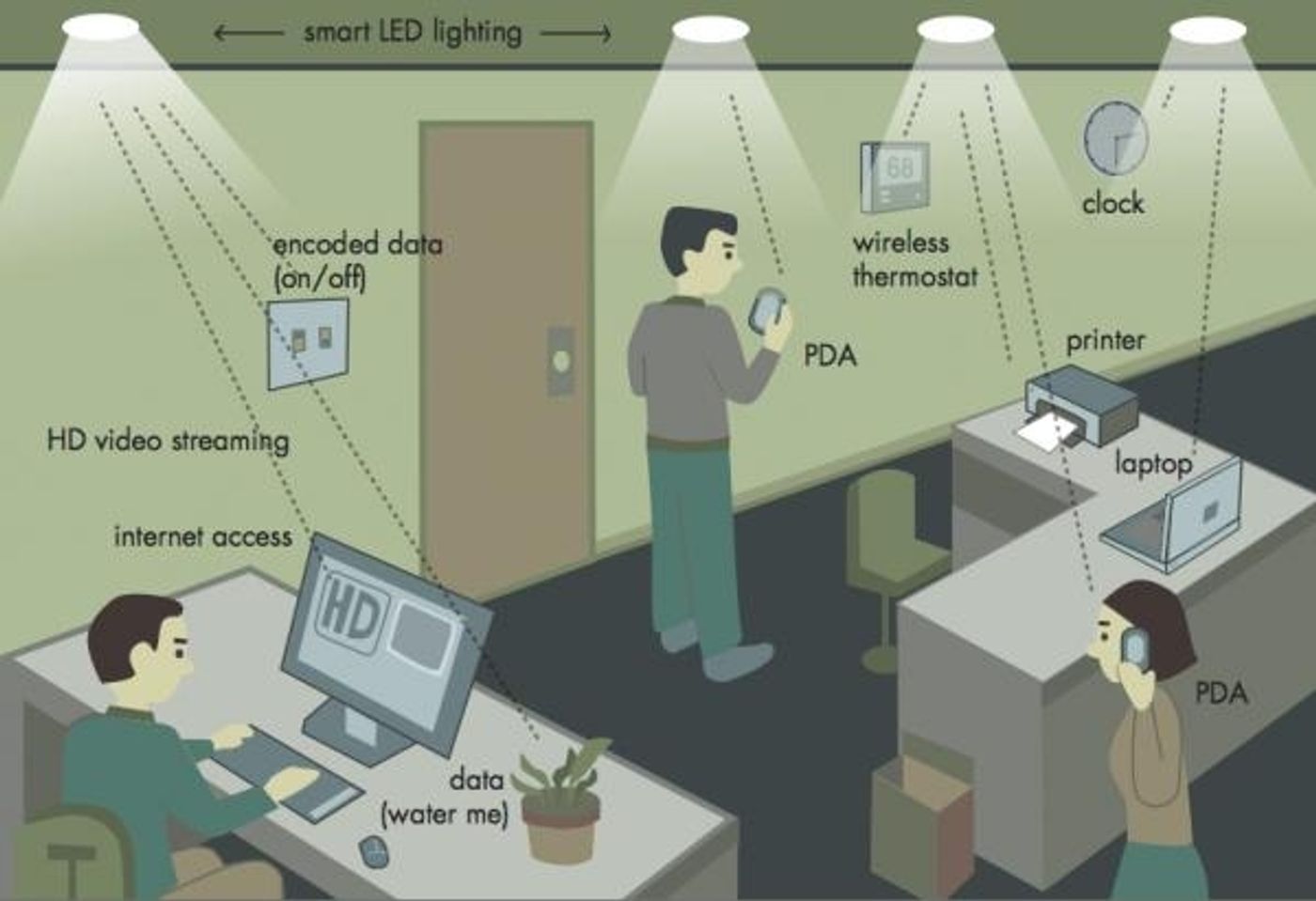Li-Fi Internet Technology Could Outpace Wi-Fi By Up to 100x
The modern wireless method of delivering Internet connections to our various machines and devices is via a Wi-Fi or cellular connection, which is a means of transmitting wireless radio signals using metal antennas. Although Wi-Fi is generally a reliable form of Internet transmission in this day in age, it does have its speed limitations because radio signals can only travel so fast.
Coming in the near future is a technology dubbed ‘Li-Fi,’ which as the name suggests, uses light-based transmission instead of radio signal-based transmission. Because light can travel so much faster than radio waves, you can expect that the technology will bring with it some serious speed boosts.
First demonstrated in 2011 by professor Harald Haas from Edinburgh University, the new Li-Fi technology has been demonstrated in an office setting for the first time. Li-Fi works by using a Li-Fi-enabled LED light bulb that can transmit light patterns to Li-Fi-enabled devices so quickly that the LED light would just look like any regular LED bulb that was just being used to provide light for a room.

With theoretical data speeds of up to 224 gigabits per second, the new technology can provide higher speeds to devices that are up to 100 times faster than traditional Wi-Fi, although real world testing has only shown about 1 gigabit per second.
What’s more is Li-Fi isn’t susceptible to interference problems like Wi-Fi is, but a direct line of sight would be necessary so that sensors could detect the signals in light changes. For this reason, the Li-Fi technology may be useful in situations where Wi-Fi-enabled devices are typically forbidden, such as hospitals and planes.
Li-Fi technology is reportedly closer to consumer’s hands than we might think. In fact, experts involved in the development of the new Internet transmission technology think it may be ready for the public within under four years.
Of course, Wi-Fi devices wouldn’t be compatible with Li-Fi Internet transmission, and it would require devices to be re-engineered with new wireless cards capable of detecting Li-Fi in a room with a Li-Fi-enabled environment. It would be worth noting that this type of technology would also probably only work indoors, considering that the Sun is so bright that it would be hard to see. That in mind, despite its potential launch, Wi-Fi probably isn’t going anywhere.
Source: NPR








